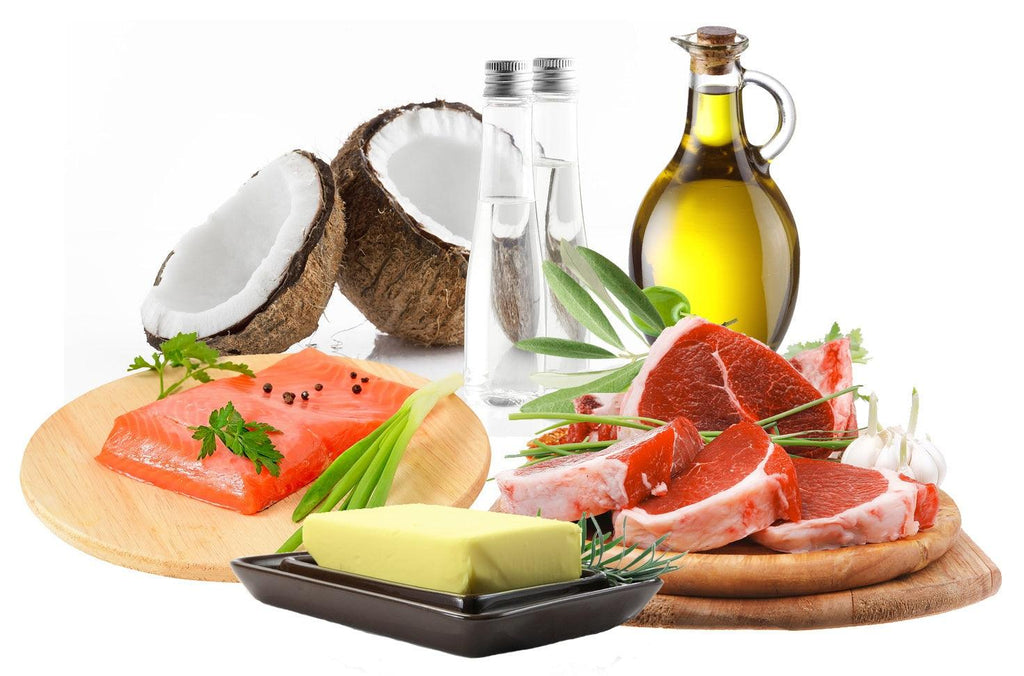When it comes to the subject of diet, there are a LOT of misconceptions out there.
And one notorious area that continues to be a source of confusion is the topic of fats!
I’m here to clear up any confusion you may have about fats, help you to realize they are not the demon they have been made out to be, but a necessary, health-supporting nutrient.
We’ll start with the different types of fats…
Saturated vs. Unsaturated fats
Saturated fats
Examples of good saturated fats from Nature include fats from animal sources (meat, butter, lard, full-fat dairy, tallow, eggs and cheese).
Saturated fats are usually solid at room temperature. They're stable and hold up to heat well without becoming damaged.
They're dense, sticky and can be difficult for your body to eliminate. But your body needs them because they help stabilize your cell membranes.
Note that saturated fats also include trans-fats, which are hydrogenated oils that have been used in many processed foods. These ARE truly harmful and stir up inflammation in your blood vessels.
Trans-fats are being phased out of our food supply, but it’s wise to read labels and avoid any products that list hydrogenated or partially hydrogenated oils as an ingredient.
Unsaturated fats—monounsaturated and polyunsaturated
Sources of monounsaturated fats are olive oil, avocados and nuts (peanuts, almonds, Brazil nuts, cashews, macadamia nuts and pecans).
Polyunsaturated fats include Omega-3 oils (fish oil, flaxseed, pumpkin seed, hemp seed and walnut oils) and Omega-6 oils (safflower, sunflower, sesame, grapeseed, borage, evening primrose and black current oils).
Unsaturated fats move through your body much more fluidly than saturated fats and are easier to eliminate. They're critical because they help provide flexibility to your cell membranes and enhance cell communication.
The Omega-3 and Omega-6 polyunsaturated fats are called "essential fatty acids" because your body can't produce them--you must get them from your diet.
And the balance between the two is very important--they work best together in your body to control inflammation when they're in a 3:1 ratio of Omega-6 to Omega-3.
Most unsaturated fats are very sensitive to heat, so they are best not used in cooking.
Now let’s look at…
3 Common Fat Mistakes
Here are three of the most common and harmful mistakes about fats:
Mistake #1: Fats are bad for you
No, they are not.
Your body MUST have fats, especially your brain and nervous system!
You also need fats to transport nutrients, to protect your internal organs, to keep your cell walls healthy, to make hormones and to create energy.
Mistake #2: Fats make you fat
Although there are many contributing factors to our obesity epidemic, the predominant one from a food perspective is not fat—it’s sugar—especially high fructose corn syrup (which is in practically every processed food and soda in existence).
Also guilty are refined carbs like bread, pasta and crackers as they turn to sugar upon digestion!
On the other hand, although fats are calorie-dense, they can be used as a source of energy (especially with a keto-type diet), they add flavor to your foods, and they help fill you up and keep you satisfied longer, so you’re less likely to overeat or snack.
That sounds like a recipe for weight LOSS to me!
Mistake #3: Saturated fats cause heart disease
That depends on what kind of saturated fat you’re talking about.
If you’re talking about trans-fats, you’re absolutely right. Trans-fats must be avoided at all cost.
But saturated fats from Nature (including red meat and real butter) are health supporting.
They have been unjustly demonized and implicated as being a cause of heart disease over the last several decades, but that’s simply not true.
The true culprits behind heart disease (in addition to trans-fats) are sugar, refined carbohydrates and grains, processed vegetable oils, and margarine—all of which have been heavily pushed over the last several decades as being “healthy choices.”
Healthy my foot—these foods are abrasive, they stir up inflammation in your blood vessels and invite cardiovascular disease to come knocking.
6 Helpful fat do’s and don’ts
Here are some fat do’s and don’ts that can help guide you in making wise choices:
# 1: Cook with the right fats
Use butter, lard, tallow, chicken fat, bacon fat, coconut oil and peanut oil in cooking.
# 2: Read labels
DON’T buy products that contain hydrogenated or partially hydrogenated oils. Also avoid margarine since polyunsaturated oils are heated when margarine is produced, and this creates harmful compounds similar to trans-fats.
# 3: Get healthy sources of saturated fats
Enjoy a variety of meats including beef, chicken, turkey, and pork, as well as eggs, cheese, butter and full-fat dairy.
# 4: Get healthy sources of Omega-3 essential fatty acids
Sources of crucial Omega-3 fats including wild salmon, walnuts, flaxseed and flaxseed oil, and you can also consider supplementing with a high-quality fish oil formula to help your body control inflammation and decrease your risk of heart disease.
# 5: Use caution when dining out
Many restaurants use polyunsaturated oils for frying their French fries, chicken strips, fish fillets and other deep-fried items.
Ask your server how the meals are prepared and request that your entrée be baked, broiled or sautéed in butter.
# 6: Be aware of rancid, oxidized oils
DON’T buy unsaturated oils that are packaged in clear glass or plastic containers, as they may be rancid.
Look for oils in green or brown containers, and store them in a dark cabinet or in the refrigerator.
Now you know the skinny on fats and how to make healthy choices!
And if you want any other diet advice, or need guidance to help achieve your health goals, or just have a few questions, go to www.holisticblends.com and book a FREE 30-minute consultation with me. We will talk about your situation and any health concerns you have, and we’ll come up with an action plan to get you on the road to better health!
To your health,
Sherry Brescia













What do you think about cooking with avocado oil?